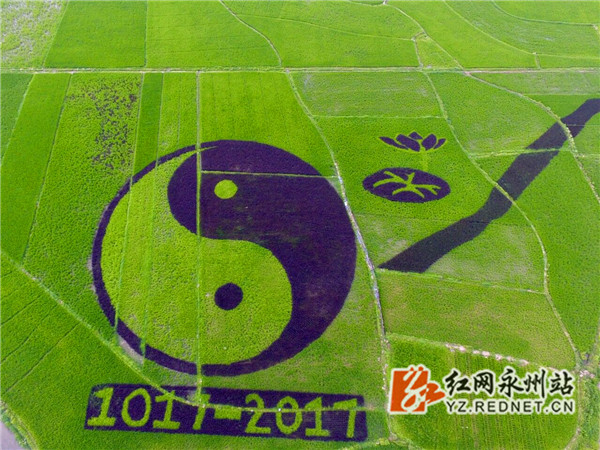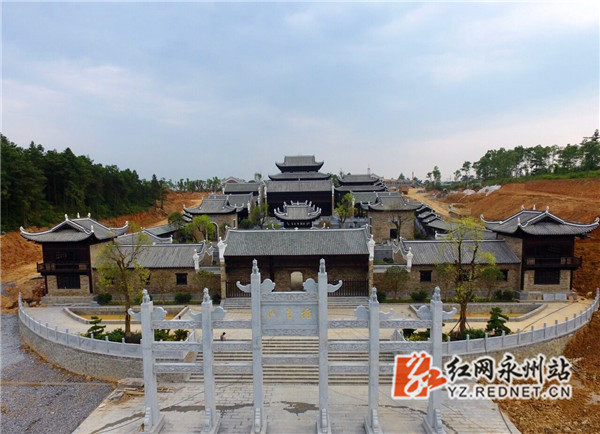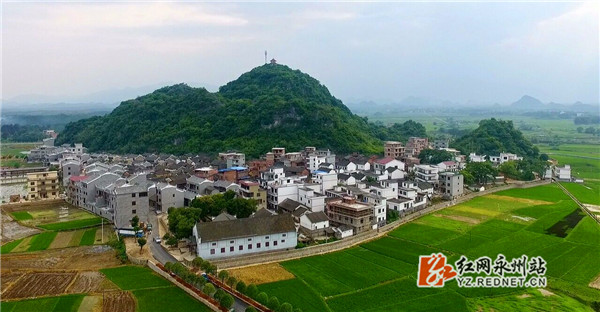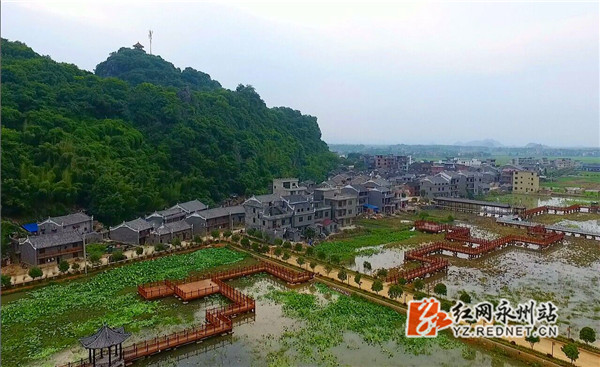A huge work of rice paddy art "Taiji diagram" made by color rice in Zhou Dunying's hometown, Qingtang Town of Dao County, in Hunan province, on July June 2.
6月2日,道县清塘镇楼田村周敦颐故里,创意彩色水稻“太极图”已进入观赏期。
创意彩色水稻“理学圣地”图案。
Creative rice paddy art with Chinese characters "Original Place of Neo-Confucian Thought " .
濂溪书院。Lianxi Academy
周敦颐故里全景。The panorama view of Zhou Dunying's hometown .
百亩荷花池。Acres of lotus pond.
为纪念周敦颐诞辰1000周年,在更高平台、更大范围唱响理学文化品牌,推进湖南省道 县文化旅游产业发展,着力把周敦颐故里楼田村建设成国家4A级旅游景区,道县重点建设濂溪书院暨濂溪祠、百亩爱莲湖、旅游道路及排洪沟、营江路口接线工程及道清公路美化绿化亮化工程、荷花池水渠、道山古城墙维修等16个项目。周敦颐诞辰千年庆典将于6月23日举行。
The millennium celebration will be held on June 23 to commemorate the 1000th anniversary of the birth of Zhou Dunyi ( who was a Song dynasty Chinese Neo-Confucian philosopher and cosmologistt) to promote the development of cultural and tourism industry in Dao County of Hunan Province. Dao County is planning to construct national 4A leveled tourist spots for 16 projects including building Lianxi Academy and Temple, acres of lotus ponds, tourism viewing roads and drainage, landscaping lighting projects, Daoshan ancient city wall and other projects.
周敦颐出生于1017年,是北宋著名哲学家、教育家、文学家,著有《太极图说》《通书》《爱莲说》等,被尊称为理学鼻祖、湖湘文化先驱。
Zhou Dunyi (Chinese: 周敦頤; Wade–Giles: Chou Tun-i; 1017–1073) was a Song dynasty Chinese Neo-Confucian philosopher and cosmologist born during the Song Dynasty. He conceptualized the Neo-Confucian cosmology of the day, explaining the relationship between human conduct and universal forces. In this way, he emphasizes that humans can master their qi ("vital life energy") in order to accord with nature. He was a major influence to Zhu Xi, who was the architect of Neo-Confucianism. Zhou Dunyi was mainly concerned with Taiji (supreme polarity) and Wuji (limitless potential), the yin and yang, and the wu xing (the five phases). He is also venerated and credited in Taoism as the first philosopher to popularize the concept of the taijitu or "yin-yang symbol". His poem "On the Love of Lotus" is widely known in china.
《爱莲说》
周敦颐
水陆草木之花,可爱者甚蕃。晋陶渊明独爱菊;自李唐来,世人盛爱牡丹;予独爱莲之出淤泥而不染,濯清涟而不妖,中通外直,不蔓不枝,香远益清,亭亭静植,可远观而不可亵玩焉。
予谓菊,花之隐逸者也;牡丹,花之富贵者也;莲,花之君子者也。噫!菊之爱,陶后鲜有闻;莲之爱,同予者何人?牡丹之爱,宜乎众矣。
“On the Love of Lotus”
Of all the flora across land and water, there are plenty to adore:
Tao Yuen-Ming of the Chin dynasty admired only chrysanthemums;
Since the dynasty of Li Tang, the peonies have been popular with the masses.
I, for one, love only the lotus -- for the way it emerged untainted from the muck,
Raising cleanly above ripples of water with an unaffected grace;
Its hollow, straight stems eschew climbing-vines or branches;
Its scent turns ever purer the farther it travels in the wind,
And all the while it quietly holds its upright stance in peace.
It can only be admired from afar, not to be sullied nor debased.
I declare:
Chrysanthemum is the hermit of the flower world;
Peony, the rich and powerful among its peers;
Lotus, the noble soul among all flora.
Oh, the appreciation of chrysanthemum is seldom known after Tao;
As for the love of lotus, who else like me would feel the same?
Peony, on the other hand, seems rather suited to the mainstream.
Original link:道县周敦颐故里:创意彩色水稻“太极图”进入观赏期





“Taiji diagram” Rice paddy art in Dao County, Hunan
Editor:李莎宁
Source:english.rednet.cn
Updated:2017-06-05 11:41:57
Source:english.rednet.cn
Updated:2017-06-05 11:41:57
Special
Contact
Welcome to English Channel! Any suggestion, welcome.Tel:0731-82965627
lisl@rednet.cn
zhouqian@rednet.cn











